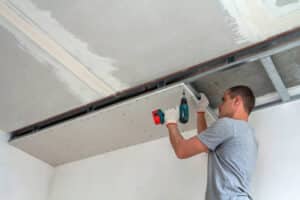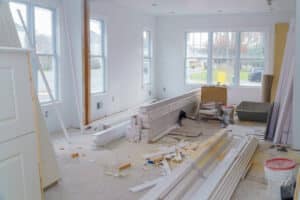Drywall Repair Safety: Protecting Your Health and Home
Drywall repair projects can be a common undertaking for homeowners, whether you’re fixing a small hole or tackling a more extensive renovation. While it may seem like a straightforward task, it’s crucial to prioritize safety to protect both your health and your home.
The Importance of Safety in Drywall Repair
Before we delve into specific safety measures, let’s discuss why safety is paramount in drywall repair.
- Health Concerns: Drywall repair uses materials like gypsum board, joint compound, and sanding dust. Inhaling dust particles or contacting chemicals can pose health risks, including respiratory issues and skin irritations.
- Potential Hazards: Handling tools such as utility knives, power sanders, and ladders can lead to accidents and injuries if used incorrectly.
- Fire Safety: Drywall is a fire-resistant material, but you may inadvertently compromise its fire resistance during repair. Ensuring safety measures are in place can mitigate this risk.

4. Structural Integrity: Poorly executed repairs can impact the structural integrity of your walls and ceilings. A sagging ceiling or a poorly anchored wall can pose significant risks.
Now that we understand why safety is essential, let’s explore specific safety measures for your drywall repair project.
Safety Precautions for Drywall Repair
Personal Protective Equipment (PPE)
Always start by donning the appropriate PPE. This includes:
- Safety glasses or goggles: Protect your eyes from flying debris and dust.
- Dust mask or respirator: Prevent inhaling harmful dust particles.
- Gloves: Shield your hands from sharp tools and chemicals.
- Hearing protection: Especially important when using power tools like sanders.
Ventilation
Proper ventilation is critical in a drywall repair project. When working with joint compound or sanding drywall, open windows and doors to ensure a good airflow. Consider using exhaust fans and air purifiers to reduce dust and fumes.
Dust Control
Drywall dust can be a nuisance and a health hazard. To control it:
- Containment: Seal off the work area with plastic sheeting to prevent dust from spreading to other parts of your home.
- Use a vacuum: Invest in a vacuum equipped with a HEPA filter to capture fine dust particles.
- Wet sanding: Use a damp sponge or sanding screen to minimize dust production.
Safe Tool Use

Drywall Installation for Beginners: Common Questions Answered
Drywall installation great way to transform your space and make it feel brand new. But if you’re new to the drywall world, you might feel a bit overwhelmed and unsure of where to start.

Drywall Repair Safety: Protecting Your Health and Home
Drywall repair projects can be a common undertaking for homeowners, whether you’re fixing a small hole or tackling a more extensive renovation. While it may seem like a straightforward task, it’s crucial to prioritize safety to protect both your health and your home.
Whether you’re using a utility knife, power sander, or a ladder, follow these guidelines:
- Sharp blades: Use a sharp utility knife to reduce the risk of slipping and injuring yourself.
- Sturdy ladder: Ensure your ladder is stable and placed on a level surface. Never stand on the top rung.
- Power tool safety: Read and follow the manufacturer’s instructions for power tools. Keep them in good working condition, and always disconnect them from power sources when not in use.
Electrical Safety
If your drywall repair project involves electrical work, such as relocating outlets or switches, turn off the power at the circuit breaker. If you’re not experienced with electrical work, consider hiring a licensed electrician to ensure safety and compliance with local codes.
Fire Safety
Drywall is fire-resistant, but it’s crucial to be cautious during repairs. Avoid open flames near drywall repair areas, such as candles or smoking. Consult a professional if unsure about your drywall repair’s fire safety.

Structural Considerations
When repairing walls or ceilings, pay attention to the structural integrity:
- Support beams: Ensure you don’t damage structural elements like support beams or studs.
- Anchoring: Ensure that your drywall is properly anchored to the framing to prevent future issues like sagging.
Chemical Safety
If you’re using joint compound or other chemicals, be aware of the following:
- Read labels: Follow the manufacturer’s instructions and warnings on chemical products.
- Ventilation: Work in well-ventilated areas and consider wearing a respirator.
- Skin protection: Use gloves and long-sleeved clothing to protect your skin from chemical contact.
Finally, when you doubtdoubt the safety and structural integrity of your drywall repair work, it’s crucial to err on the side of caution and consult a professional drywall repair contractor. Safety should always be a top priority, and any uncertainty about the quality of your work or its potential impact on your home’s structure should not be taken lightly.
